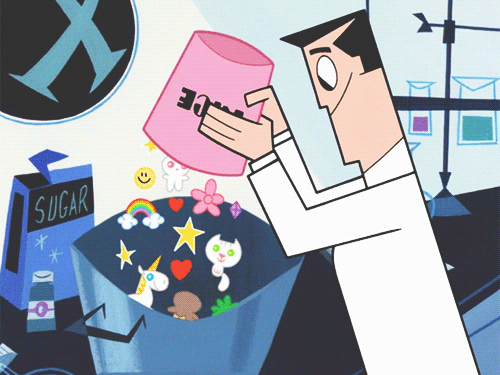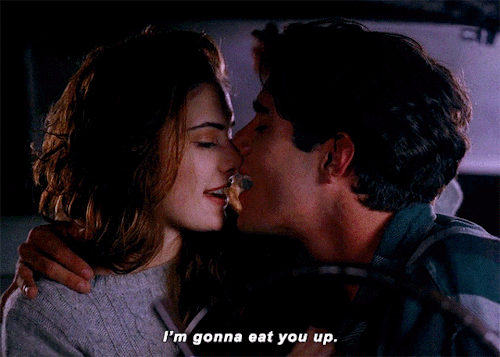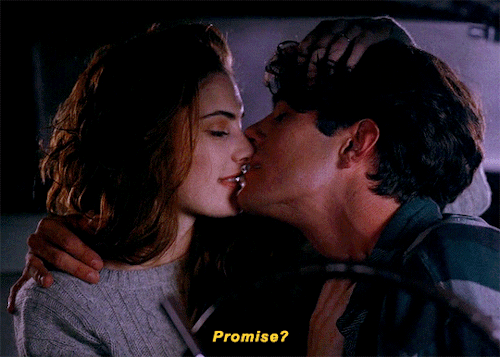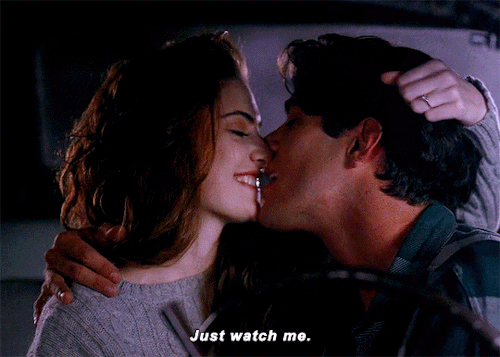Bi-supremacy - Untitled

More Posts from Bi-supremacy and Others







“I think (bisexuals) can offer an analysis of power inherent not only in male-female relationships but also in the dynamics that exist in other hierarchical relationships. If as bisexual women we can create models for egalitarianism, or for potential egalitarianism in relationships with men, then there’s also the potential to use those models between women. If we can build alliances with men, who are our oppressors, then also it means that for those of us who are white women, or are able-bodied women, that we can also begin to know our role as allies to women of colour, to disabled women, to psychiatrized women. You know, there’s that possibility.”
- Lilith Finkler, Plural Desires: Writing Bisexual Women’s Realities
“Issues of shame pervade the difficulties bisexuals face in attempting to form a positive, well-integrated bisexual identity. Because an individual member of an oppressed group is frequently seen as representative of all the members of that group, a bisexual-identified person may feel a sense of shame when any bisexual person behaves in such a way as to reinforce negative stereotypes of bisexual people. Furthermore, a bisexual individual may feel a profound sense of shame when her own behavior happens to mirror one of the existing stereotypes… Individuals in such situations may feel that they are in some way betraying their entire identity group. Although some bisexual people do behave in ways that conform to negative stereotypes about bisexuals, it is actually the dynamics of prejudice that cause others to use such actions to justify their stereotyping and prejudicial behavior.”
- Robyn Ochs, Bisexuality: The Psychology and Politics of an Invisible Minority



Bobby Briggs…
Twin Peaks: Coma (1990) dir. David Lynch
thank you masochists for existing so that people like me can lovingly beat you up


“Although bisexuals have always been part of lesbian and gay movements and communities, they have often not been visible as bisexuals in these groups. Consider, for instance, these little-known historical facts:
A bisexual man was one of the key organizers of the first national March on Washington for Lesbian and Gay Rights in 1979. He also cofounder the National Coalition of Black Lesbians and Gays and led a delegation of black gays to meet with White House staff while Carter was President.
A bisexual Washingtonian was one of the first women to write about living women in the national feminist news journal, off our backs, in 1972.
It was a bisexual man who conceived and spearheaded the successful national “gaycott” of Florida orange juice in response to Anita Bryant’s homophobic “Save Our Children” campaign in Dade County, Florida, in the late 1970s.
A lesbian-identified bisexual ex-suburban housewife ran for Vice President on a bisexual/lesbian/gay civil rights platform during the 1984 Democratic Party convention in San Francisco.
In May 1989, a bisexual veteran from New England, representing the National Gay, Lesbian, and Bisexual Veterans Association, was the first out-of-the-closet veteran invited to testify before Congress on behalf of all lesbian, gay, and bisexual veterans.
But even in these high-profile “out” positions, bisexuals often continued to be perceived as gays and lesbians by both the gay rights movement and the rest of society.”
- Loraine Hutchins, Bisexuality: The Psychology and Politics of an Invisible Minority
“When you do take the trouble to point out that you are, in fact, bisexual - that no matter whether you are with a man or a woman you will always have the potential to go either way - people look at you with scepticism, confusion, disbelief, or perhaps even envy. Their faces say this: you’re lying to yourself, it’s just a phase, you don’t know what you want, you’re letting the side down, you’re greedy, you don’t exist. But you do exist. Here you are.”
- Chitra Ramaswamy, The Bi-ble: an anthology of personal essays and narratives about bisexuality
-
 awatchparty reblogged this · 3 weeks ago
awatchparty reblogged this · 3 weeks ago -
 entactogenic reblogged this · 1 month ago
entactogenic reblogged this · 1 month ago -
 coldlimbedangel liked this · 1 month ago
coldlimbedangel liked this · 1 month ago -
 placesofkm liked this · 1 month ago
placesofkm liked this · 1 month ago -
 h1gh3rth4nm05t reblogged this · 1 month ago
h1gh3rth4nm05t reblogged this · 1 month ago -
 bigjake012 liked this · 1 month ago
bigjake012 liked this · 1 month ago -
 death-not-today reblogged this · 1 month ago
death-not-today reblogged this · 1 month ago -
 cuddlyybear liked this · 1 month ago
cuddlyybear liked this · 1 month ago -
 blah-cubed reblogged this · 1 month ago
blah-cubed reblogged this · 1 month ago -
 laurelorel reblogged this · 1 month ago
laurelorel reblogged this · 1 month ago -
 maopopo222 reblogged this · 1 month ago
maopopo222 reblogged this · 1 month ago -
 iconomiccc reblogged this · 1 month ago
iconomiccc reblogged this · 1 month ago -
 106abril liked this · 1 month ago
106abril liked this · 1 month ago -
 pachi-venere reblogged this · 1 month ago
pachi-venere reblogged this · 1 month ago -
 yourbloodtasteslikewine reblogged this · 1 month ago
yourbloodtasteslikewine reblogged this · 1 month ago -
 nostalgic-ausi reblogged this · 1 month ago
nostalgic-ausi reblogged this · 1 month ago -
 wanderlustlolita reblogged this · 1 month ago
wanderlustlolita reblogged this · 1 month ago -
 thelaskeeter reblogged this · 1 month ago
thelaskeeter reblogged this · 1 month ago -
 translucent-wxnderland reblogged this · 1 month ago
translucent-wxnderland reblogged this · 1 month ago -
 awurrido liked this · 2 months ago
awurrido liked this · 2 months ago -
 bosscakess liked this · 2 months ago
bosscakess liked this · 2 months ago -
 beecuzisaid-so reblogged this · 2 months ago
beecuzisaid-so reblogged this · 2 months ago -
 somebodysunny reblogged this · 2 months ago
somebodysunny reblogged this · 2 months ago -
 sweet-sad-soull liked this · 2 months ago
sweet-sad-soull liked this · 2 months ago -
 ypbg29 reblogged this · 2 months ago
ypbg29 reblogged this · 2 months ago -
 i-need-a-hug-owo reblogged this · 2 months ago
i-need-a-hug-owo reblogged this · 2 months ago -
 jamas-hubiera-funcionado reblogged this · 2 months ago
jamas-hubiera-funcionado reblogged this · 2 months ago -
 wissdlux reblogged this · 2 months ago
wissdlux reblogged this · 2 months ago -
 we-are-again-orion-norion liked this · 2 months ago
we-are-again-orion-norion liked this · 2 months ago -
 bobmth reblogged this · 2 months ago
bobmth reblogged this · 2 months ago -
 e-koms reblogged this · 2 months ago
e-koms reblogged this · 2 months ago -
 enciende-la-mente reblogged this · 2 months ago
enciende-la-mente reblogged this · 2 months ago -
 enciende-la-mente liked this · 2 months ago
enciende-la-mente liked this · 2 months ago -
 alegna420 liked this · 2 months ago
alegna420 liked this · 2 months ago -
 meunomelara reblogged this · 2 months ago
meunomelara reblogged this · 2 months ago -
 meunomelara liked this · 2 months ago
meunomelara liked this · 2 months ago -
 ohsosadity reblogged this · 2 months ago
ohsosadity reblogged this · 2 months ago -
 kattmeraki liked this · 2 months ago
kattmeraki liked this · 2 months ago -
 goodfellower reblogged this · 2 months ago
goodfellower reblogged this · 2 months ago -
 disparias reblogged this · 2 months ago
disparias reblogged this · 2 months ago -
 000-um reblogged this · 2 months ago
000-um reblogged this · 2 months ago -
 000-um liked this · 2 months ago
000-um liked this · 2 months ago -
 thescarletalice reblogged this · 2 months ago
thescarletalice reblogged this · 2 months ago -
 tht-guy-nando3 liked this · 2 months ago
tht-guy-nando3 liked this · 2 months ago -
 hernandez-lizbeth reblogged this · 2 months ago
hernandez-lizbeth reblogged this · 2 months ago -
 xocyanidee reblogged this · 2 months ago
xocyanidee reblogged this · 2 months ago -
 brokeafideas reblogged this · 2 months ago
brokeafideas reblogged this · 2 months ago -
 sm00th-transiti0ns reblogged this · 2 months ago
sm00th-transiti0ns reblogged this · 2 months ago -
 random-lesbian-girl reblogged this · 2 months ago
random-lesbian-girl reblogged this · 2 months ago